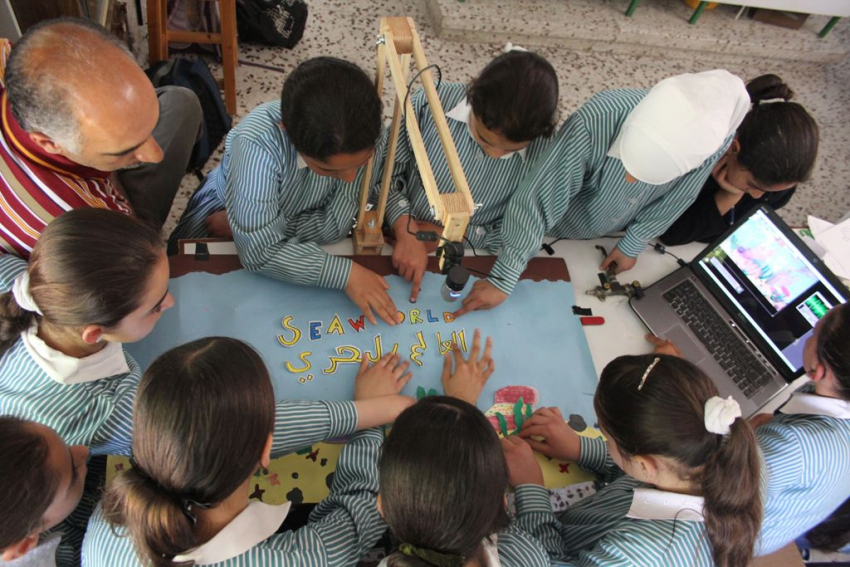
Today it is possible to have a big impact using only simple tools. The implications of having access to affordable consumer electronics have been far-reaching, with countless people using their mobile phone cameras to create art or to communicate globally. This was witnessed recently, as protestors in the streets shared their experiences with the world. On a smaller scale, students are eager to use non-traditional tools at school to learn, share, and develop their knowledge and skills.
“With a simple camera and computer, children and students can express their ideas, transform them into movies, and post these on social networks such as Facebook and YouTube,” says Wasim Kurdi, Director of the Qattan Centre for Educational Research and Development.
The Animation in Education programme aims to develop the skills of teachers and students in producing short claymation and cardboard animation films using small, inexpensive cameras and computer software. The project is built around the belief that art is crucial to a well-balanced education, and allows students to combine theory and technical knowledge on the one hand, with the development of creativity and social skills on the other.
Animation in Education covers everything from manual skills to the process of creative production. A considered approach to teaching animation makes the programme suitable for all ages, and for those working at varying degrees of ability. The programme also provides a suitable framework for educational planning focused on skill development, where the student is both a learner and producer of knowledge.
Mohammed Nakhla, a student in the tenth grade at Prince Hassan School, describes his reaction when he first heard about the Animation in Education project."I did not pay any attention to the topic. I said to myself: it is impossible for me to do film production, but I changed my mind after I made my first film. It drew me to this field.”
Mohammed’s first film was about the well-known cartoon character Sponge Bob Square Pants, and he soon applied the skills he had learned to overcome his difficulties with the school curriculum. "I am impatient by nature,” Mohammed explains. “I have a problem with memorising, but I had to memorise a poem for the Arabic language exam. So I transformed it into an animated short film, and only then did I succeed in memorising the poem."
When the time came for the exam, Mohammed did not use a book to learn the poem. Instead, he watched his film to recall the sequence of events and characters. On the exam paper, he conjured up the scenes and easily wrote out the poem from memory.
Students at the Sheikh Saad Girls’ School were also pleased with the programme. One student, 16-year-old Tala Allan, says: "This project revealed students' talents in writing and drawing, and also their technical skills. We learned how to make a meaningful film together using cardboard and clay.
In addition to fulfilling numerous educational objectives, the Animation in Education project also contributes to developing students’ appreciation for the arts, and allows them to explore new horizons.
"This training made a difference in my ability to understand information at school,” says 17-year-old Ahmed Khalil Alayan, of Prince Hassan School. “The movies that we made helped me understand what we are learning in science and in Arabic. It also inspired me to specialise in acting."
Ahmed’s commitment to making films has gone beyond the school walls, and he continues to hone his craft at home. At the end of the 2011 summer holidays, Ahmed returned to school with two short films that he had produced with his brother. The Qattan Centre for Educational Research and Development then showed the films at the closing ceremony of the first phase of the Animation in Education programme in December of that year. The event was attended by 400 teachers and students from participating schools, and many of them expressed their admiration for Ahmed's work.
Ahmed says: “Before starting the programme, I figured it would just be an opportunity for entertainment and nothing more. But then I discovered that I was learning an excellent way to think, plan, and express things about myself and about my surroundings. It has helped me to understand difficult subjects and ideas from the school curriculum, by transforming them into movies that everyone can enjoy."
Speaking about the Animation in Education programme, WasimKurdi says: “Students pass through an integrative process across several stages. The first is thinking, then imagination, then experimentation. This allows them to use their faculties to the fullest."
